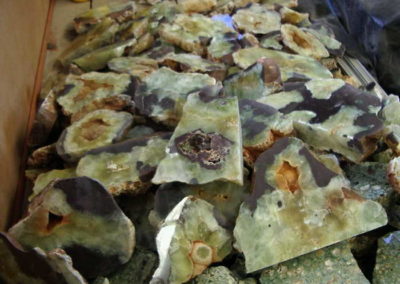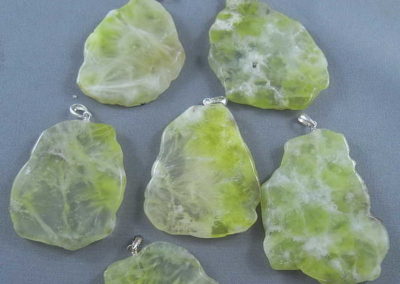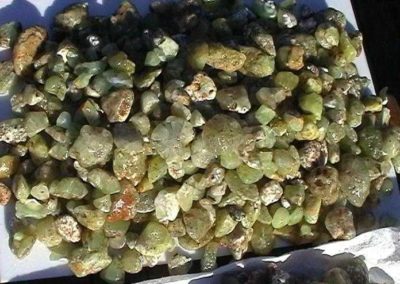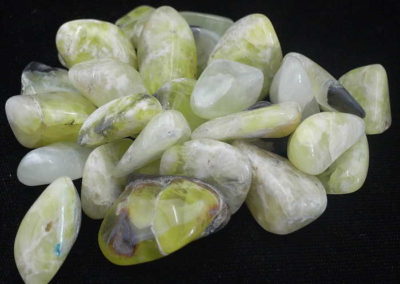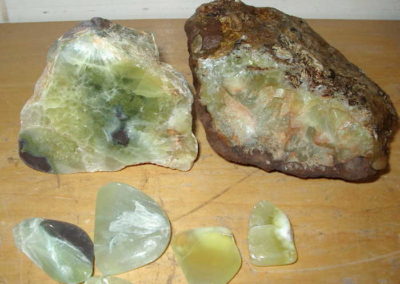Prehnite is a hydrated Calcium Aluminium Silicate which forms when hot, circulating solutions leach minerals from surrounding rocks and deposit them in veins and cavities in basic igneous rocks, mainly amygdaloidal basalt.
Prehnite was named after Colonel Prehn, who first found the mineral near the Cape of Good Hope in South Africa.
Australian Prehnite ranges in colour from almost grey, pale green to dark oily green through a range of yellow colours. The most sought after colour is a bright, transparent yellow gem material, often with inclusions of “flowers” or “suns” of natrolite.
In Australia, Prehnite is most often found as nodules, often with the host basalt rock attached. The mineral has a radiating crystal structure and forms complete individual spheres given the right conditions. This radiating crystal structure also gives Prehnite a cat’s-eye effect when cut into cabochons or facetted gems. The mineral can also occur in a tabular, botryoidal or stalactitic form.
Most Prehnite in Australia comes from the Wave Hill deposits in the Northern Territory. There are also deposits in the Kimberley and other regions of Western Australia as well as specimen material in New South Wales.
Prehnite has a MOH’s hardness of around 6 – 6.5 and is well suited to high quality beads and cabochons. Prehnite in nodular form is often used in carvings which make use of the contrast between the green Prehnite and brown basalt host rock. Prehnite makes an interesting facetted stone for collectors.

